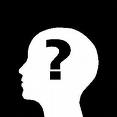CBT Self Help Course Step 5
Continued from Step 4
Printable PDF: Step 5
See also: The Decider Skills for Self Help online course
The documents linked from the bottom of each page are intended to be an integral part of this course, and should not be omitted - the worksheet documents are included in the downloadable Steps linked above.

Having learned that thoughts are just thoughts, that they're automatic, not necessarily true, habitual and just appear believable, then we can behave like the mind bully's Victim 2 in the previous step and learn to challenge our thoughts.
We can start by identifying which of our thoughts is the HOT thought:
Write down several thoughts from a recent distressing situation. What did those thoughts say about you, or mean to you? Of all those, which one thought (or image) was the one that made you most upset?
Let's take that hot thought - THE thought that contributed most to making you feel distressed or depressed. Ask yourself the following questions about THAT thought:

- Is this thought a fact, or just a thought? Fact Or Opinion?
- What am I reacting to? What meaning am I giving this situation?
- Is there another way of looking at it?
- What would someone else make of it? It's often helpful to think about a particular person who you respect, and imagine what they would think about that thought, what meaning they would give it, and how they would react to it.
- What advice would I give someone else (with this thought in this situation)?
- Is this one of those Unhelpful Thinking Habits?
- Is my reaction in proportion to the actual event?
- How important is this really? How important will it be in a year's time?
- Can I be moreflexibe in my thinking?
- How am I reacting? When I think of that Playground Bully, am I like Victim 1 (believing and getting upset), or can I be like Victim 2 and challenge the bully?
- Learn to Notice The Positives
- What if I tried to see this situation as an outside observer. How would that look? Would things be likely to have a different meaning?
- What evidence is there that this thought is true?
- What evidence is there that this thought isn't true (partly or totally)?
- What would be a more balanced way of looking at it? Wise Mind
- What is the bigger picture? The Helicopter View.
- Use Thought Challenging
Don't Believe Everything You Think
Use these sheets repeatedly to learn to challenge your thoughts successfully :
- The Court Case or PDF OR..
- Thought Challenge or PDF OR..
- STOPP or PDF
- Positive Coping Statements
- Fact or Opinion?
- Vicious Cycle & Alternatives (PDF)
- Flexible Thinking
- The Worry Tree
The Court Case: Thought Challenging - video
THINK - video
Use the Self Help mp3 downloads to strengthen therapy or as a stand-alone technique
See also: The Decider Skills for Self Help online course






















